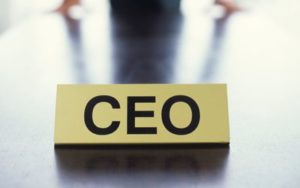Let’s talk about lawyers…
Over the years in business and as a member of over forty boards, I have received good advice from corporate attorneys and on occasion bad advice as well. There is a line that should be drawn in a relationship between corporate attorney and CEO or board. Attorneys are paid to protect the corporation, not to give business advice. Some are experienced enough to provide great business advice.
But the law degree they earned does not assure that, even though most CEO’s respect the advice they receive from their attorney highly enough not to doubt the conclusions or the experience behind the conclusions offered. And since attorneys are paid to protect, often they will give a litany of warnings about what could go wrong when accepting a contract clause that they have been trained to challenge.
advice they receive from their attorney highly enough not to doubt the conclusions or the experience behind the conclusions offered. And since attorneys are paid to protect, often they will give a litany of warnings about what could go wrong when accepting a contract clause that they have been trained to challenge.
Business advice vs. legal advice
There comes a time when a CEO must decide to reject what may seem like important good advice from the attorney and chance acceptance of terms within a contract that may cause risk, but controllable risk or risk that is so remote as to be worth the acceptance of the business represented by the contract at hand.
Another story about this…
[Email readers, continue here.] I was chairman of a company that had been offered an investment by a Fortune 500 company offering to make a strategic investment in our business, which would be capable of driving new demand to the large company through a series of new web services creating a greater need for the large company’s products.
The business terms had been agreed between the business development officer of the investing company and our board, as both companies turned the details over to their respective attorneys for documentation. The attorney for the investor was a member of a large, respected law firm in Silicon Valley, and certainly was full of himself as sole legal protector of the rights of his very significant investor.
 As drafts of the otherwise standard investment agreements passed from him to our attorney and our management, we immediately spotted a significant number of terms we not only had not agreed to but were contrary to the spirit of the investment. The attorney held fast defending every challenge, stating that “these terms are standard for our client and cannot be changed.” We appealed to the business development executive, who deferred to the attorney restating that the terms were unchangeable as far as the big company was concerned. After conferring between our attorney and board, we walked away from what would have been a fine strategic partnership, killed by an attorney who probably understood the client requirements but was unwilling to offer flexible solutions to problem areas.
As drafts of the otherwise standard investment agreements passed from him to our attorney and our management, we immediately spotted a significant number of terms we not only had not agreed to but were contrary to the spirit of the investment. The attorney held fast defending every challenge, stating that “these terms are standard for our client and cannot be changed.” We appealed to the business development executive, who deferred to the attorney restating that the terms were unchangeable as far as the big company was concerned. After conferring between our attorney and board, we walked away from what would have been a fine strategic partnership, killed by an attorney who probably understood the client requirements but was unwilling to offer flexible solutions to problem areas.
Drawing the line…
That attorney had made what we considered business decisions on behalf of his client. By the way, we immediately found a willing replacement that had an attorney not quite so full of himself and quickly concluded a similar deal to the acceptance of all. And to this day, I caution my CEO’s not to deal with that Fortune 500 firm because of the experience we had with its attorney. You never know how much far reaching an action can be, given the speed and extent of communication between CEO’s today.

 shows with time to spend with competitors. Some of these are old friends, some even former associates. It is natural to want to associate with these people for many reasons, certainly socially. Most CEOs want to obtain information about their competitors in the most subtle and non-obvious ways. And of course, most are willing to trade information to get information.
shows with time to spend with competitors. Some of these are old friends, some even former associates. It is natural to want to associate with these people for many reasons, certainly socially. Most CEOs want to obtain information about their competitors in the most subtle and non-obvious ways. And of course, most are willing to trade information to get information. On the other hand, often a salesperson or marketing manager would show up at my office door with a complete package of a competitor’s materials, including price lists, a proposal with discount percentages clearly shown and a list of feature functionality meant to reinforce the proposal. The source of this information was typically the purchasing decision-maker for a friendly customer or candidate customer. The question is one of ethics, since the competitor certainly did not volunteer any of the information, which would have been the competitor employee’s violation of confidentiality and cause for being fired.
On the other hand, often a salesperson or marketing manager would show up at my office door with a complete package of a competitor’s materials, including price lists, a proposal with discount percentages clearly shown and a list of feature functionality meant to reinforce the proposal. The source of this information was typically the purchasing decision-maker for a friendly customer or candidate customer. The question is one of ethics, since the competitor certainly did not volunteer any of the information, which would have been the competitor employee’s violation of confidentiality and cause for being fired. theme, emphasizing the need for deep and wide relationships that the CEO and senior staff can call upon for advice and guidance. This is the time to elevate those insights to the level of highest value for the corporation, one that cannot be listed on a balance sheet nor included in an appraisal of corporate worth.
theme, emphasizing the need for deep and wide relationships that the CEO and senior staff can call upon for advice and guidance. This is the time to elevate those insights to the level of highest value for the corporation, one that cannot be listed on a balance sheet nor included in an appraisal of corporate worth. The format also calls for the CEO to examine their calendar over time and report classes of activities by percentage of total time spent, so that the group may add comments about use of that person’s valuable time to the critique. It is from over a thousand of these CEO presentations over the years that I attempt to make the following generalities.
The format also calls for the CEO to examine their calendar over time and report classes of activities by percentage of total time spent, so that the group may add comments about use of that person’s valuable time to the critique. It is from over a thousand of these CEO presentations over the years that I attempt to make the following generalities. from friends and family, if the company needs more cash for growth, the most obvious next step is to look for money from angel investors and venture capitalists, typically in the $300,000 TO $3,000,000 range.
from friends and family, if the company needs more cash for growth, the most obvious next step is to look for money from angel investors and venture capitalists, typically in the $300,000 TO $3,000,000 range. In later insights, we will explore the legal and ethical responsibilities of board members. But the intent of these “forced” placements of a representative on the board is obviously to watch over the company’s use of invested funds and to help grow the company in value. The combination of restrictive covenants in the investor documents and the new dynamic of board members with an agenda make for a change in the culture of the corporation, certainly one for the CEO.
In later insights, we will explore the legal and ethical responsibilities of board members. But the intent of these “forced” placements of a representative on the board is obviously to watch over the company’s use of invested funds and to help grow the company in value. The combination of restrictive covenants in the investor documents and the new dynamic of board members with an agenda make for a change in the culture of the corporation, certainly one for the CEO. evidenced in the board of directors or within the company itself. University professors, industry gurus, lawyers familiar with patent law and former executives of competitor companies are typical recruits you might consider. Sometimes, celebrities will agree to sit on an advisory board as a gift to the CEO, providing a bit of glamour for the company at small expense.
evidenced in the board of directors or within the company itself. University professors, industry gurus, lawyers familiar with patent law and former executives of competitor companies are typical recruits you might consider. Sometimes, celebrities will agree to sit on an advisory board as a gift to the CEO, providing a bit of glamour for the company at small expense. in a person, is knowledgeable about the business process, and who has an extended list of relationships to call upon to fill needs that become obvious in the coaching process.
in a person, is knowledgeable about the business process, and who has an extended list of relationships to call upon to fill needs that become obvious in the coaching process.  Some larger communities have organizations of corporate directors, composed of a combination of service providers and professional corporate directors. I’ve personally been involved with the ABL Organization for over thirty years and share problems and solutions with a monthly roundtable of smart CEOs from companies of all sizes.
Some larger communities have organizations of corporate directors, composed of a combination of service providers and professional corporate directors. I’ve personally been involved with the ABL Organization for over thirty years and share problems and solutions with a monthly roundtable of smart CEOs from companies of all sizes. experience in exchange for equity – and managing to become wealthy in the process by picking and aiding great young companies that grew large and were ultimately sold at a tremendous profit. We had no term for such work in those days and created the phrase “resource capitalist” to describe the person and process. He brought resources to the table from personal experience to a great contact base and was able to help speed the time to market while introducing the company to great potential buyers at the right time in the process. His average percentage of a company was 5% in return for spending a day a week as I recall.
experience in exchange for equity – and managing to become wealthy in the process by picking and aiding great young companies that grew large and were ultimately sold at a tremendous profit. We had no term for such work in those days and created the phrase “resource capitalist” to describe the person and process. He brought resources to the table from personal experience to a great contact base and was able to help speed the time to market while introducing the company to great potential buyers at the right time in the process. His average percentage of a company was 5% in return for spending a day a week as I recall. planning for a new office is done with an optimistic view of the future, incorporating planned space that compromises only slightly the measured needs for the next three or more years as outlined in the financial forecast. Yes, we can mitigate that with starting with a reduced size given the current remote and hybrid work environment.
planning for a new office is done with an optimistic view of the future, incorporating planned space that compromises only slightly the measured needs for the next three or more years as outlined in the financial forecast. Yes, we can mitigate that with starting with a reduced size given the current remote and hybrid work environment. The distractions are dealt with using earphones with their smartphones, concentration and tolerance; but they are dealt with by all. The change to a near silent environment is so startling that, many times, employees express a bit of resentment or even depression, masked by the common statement that “it is so much easier to get work done without the noise.” It is the excitement of activity that generates more and better output for most, not the isolation of silence.
The distractions are dealt with using earphones with their smartphones, concentration and tolerance; but they are dealt with by all. The change to a near silent environment is so startling that, many times, employees express a bit of resentment or even depression, masked by the common statement that “it is so much easier to get work done without the noise.” It is the excitement of activity that generates more and better output for most, not the isolation of silence. venture investors will not survive three years from funding to demise, and more than that percentage will die with two years if not well financed. The greatest burden of either a growing company or one needing to retract and reduce expenses is the office lease – especially in these years after COVID and remote work. Although payroll is almost always the greatest cost, companies have flexibility as to how to handle both rapid growth and rapid decline in the personnel arena.
venture investors will not survive three years from funding to demise, and more than that percentage will die with two years if not well financed. The greatest burden of either a growing company or one needing to retract and reduce expenses is the office lease – especially in these years after COVID and remote work. Although payroll is almost always the greatest cost, companies have flexibility as to how to handle both rapid growth and rapid decline in the personnel arena. It is a hassle to move, requiring time and planning. It is much worse to worry overpaying for two leases each month and tying up two large deposits. Or honoring a personal guarantee if the company cannot pay.
It is a hassle to move, requiring time and planning. It is much worse to worry overpaying for two leases each month and tying up two large deposits. Or honoring a personal guarantee if the company cannot pay. decade of maintaining a fixed office location. She organized morning conference calls, had each employee tweet the others in their department when starting work and ending the day, creating the feel of closeness with employee contests, and rewarded her best salespeople by assigning them the best leads, creating an environment where the best excel and those unable to cut it in a virtual environment fall out on their own accord for lack of revenue.
decade of maintaining a fixed office location. She organized morning conference calls, had each employee tweet the others in their department when starting work and ending the day, creating the feel of closeness with employee contests, and rewarded her best salespeople by assigning them the best leads, creating an environment where the best excel and those unable to cut it in a virtual environment fall out on their own accord for lack of revenue. As you see from the story above, it does take more creative management to make this work. It is a management skill that was not taught nor learned until recent times. A creative CEO will find ways to motivate and compensate for the lone nature of working alone, but using social networking tools to make office workers and home workers feel and behave as a unit. After all, with this generation of texting, tweeting, IM-based workforce, you’ll find as much of this kind of communication from adjacent cubicles as from distant home offices.
As you see from the story above, it does take more creative management to make this work. It is a management skill that was not taught nor learned until recent times. A creative CEO will find ways to motivate and compensate for the lone nature of working alone, but using social networking tools to make office workers and home workers feel and behave as a unit. After all, with this generation of texting, tweeting, IM-based workforce, you’ll find as much of this kind of communication from adjacent cubicles as from distant home offices. company looking to expand into the United States. During the discussions with the CEO about hiring North American managers, he made it clear that he wanted us to find a first-class office facility from which to start the search process, and proceeded to name cities that attracted him. Even after discouraging him from this backwards method of infrastructure-building, he kept bringing up the subject in subsequent months as new senior managers and salespeople were hired, each starting with an orientation week at the Asian headquarters then returning to work from home.
company looking to expand into the United States. During the discussions with the CEO about hiring North American managers, he made it clear that he wanted us to find a first-class office facility from which to start the search process, and proceeded to name cities that attracted him. Even after discouraging him from this backwards method of infrastructure-building, he kept bringing up the subject in subsequent months as new senior managers and salespeople were hired, each starting with an orientation week at the Asian headquarters then returning to work from home. With audio and video conferencing and all the tools for communication and collaboration available today, each of these four new employees felt empowered, connected and enthused to work from home for the first time. The CEO was still talking about finding an office when the natural progression of growth made it obvious that two of the four needed to be replaced. These two worked from homes in widely scattered cities. Had the office been located to accommodate either one, the company would have had to find replacements in the same geographical area as the office. Without that restriction, outstanding replacements could be located based upon skill and experience, not location.
With audio and video conferencing and all the tools for communication and collaboration available today, each of these four new employees felt empowered, connected and enthused to work from home for the first time. The CEO was still talking about finding an office when the natural progression of growth made it obvious that two of the four needed to be replaced. These two worked from homes in widely scattered cities. Had the office been located to accommodate either one, the company would have had to find replacements in the same geographical area as the office. Without that restriction, outstanding replacements could be located based upon skill and experience, not location. flexibility as those they manage. So, one of the advantages of new or young employees – having visibility and time with their managers – cannot easily be realized, frustrating the employee who made the extra effort to come into the office.
flexibility as those they manage. So, one of the advantages of new or young employees – having visibility and time with their managers – cannot easily be realized, frustrating the employee who made the extra effort to come into the office.